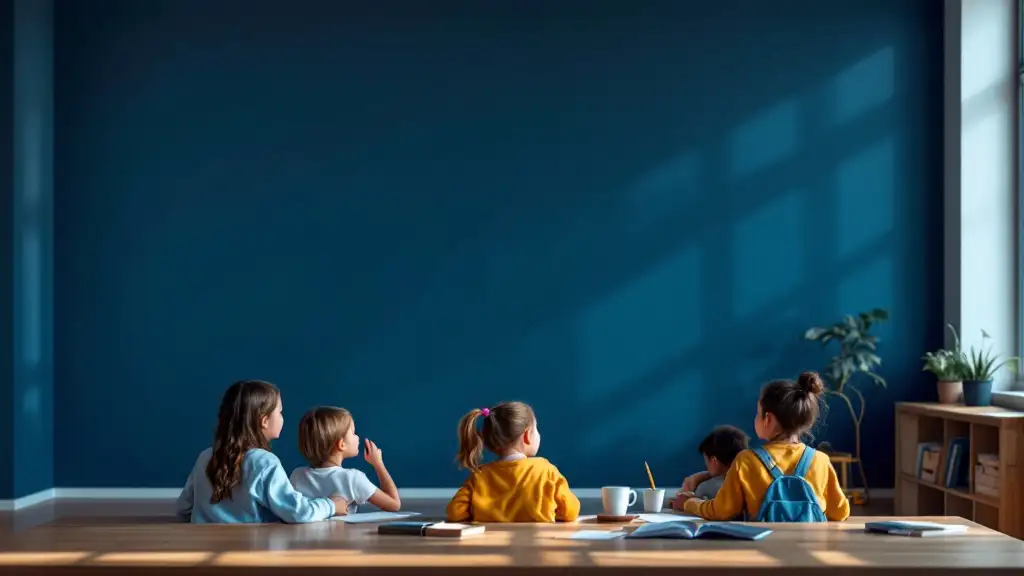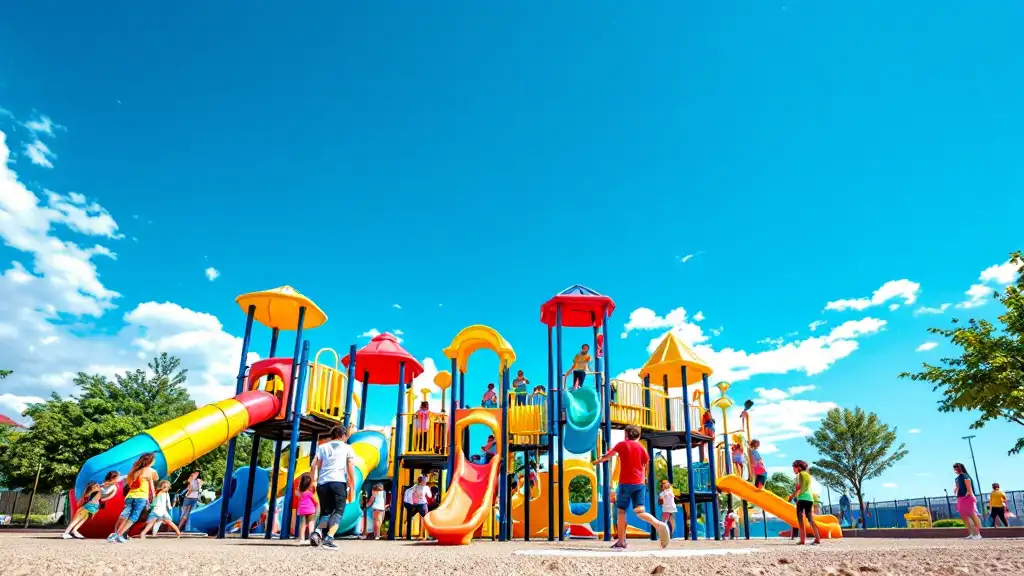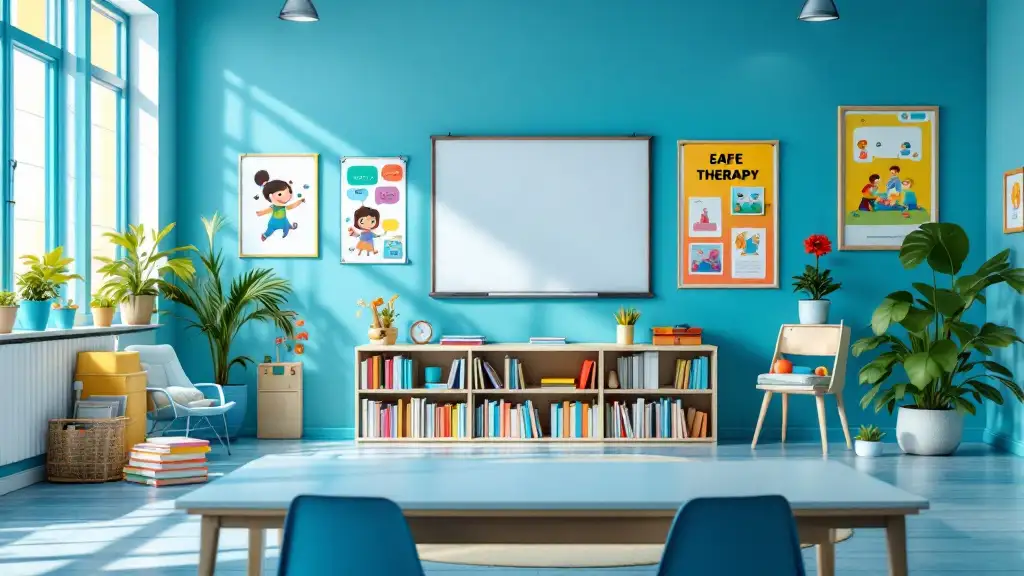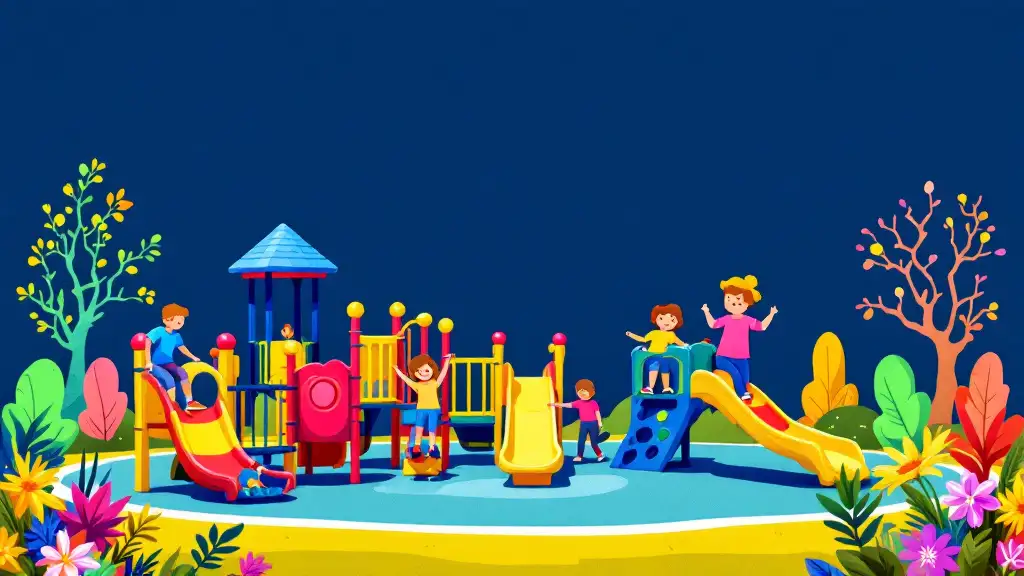
Understanding Childhood Anxiety and Its Behavioral Interventions
Childhood anxiety disorders are common and can significantly interfere with a child's social, academic, and emotional development. Recognizing symptoms early and applying evidence-based behavioral therapy strategies can lead to substantial improvements. Cognitive-behavioral therapy (CBT) stands as the gold standard for treating childhood anxiety—helping children understand their fears, challenge distorted thoughts, and gradually confront anxiety-provoking situations through structured exposure. This article explores the key behavioral therapy strategies, the role of parents, assessment procedures, and practical tools used to empower children and their families in managing anxiety effectively.
The Foundations of Cognitive-Behavioral Therapy (CBT) for Childhood Anxiety
What is the most effective therapy for childhood anxiety?
Cognitive-behavioral therapy (CBT) stands out as the most scientifically supported and effective treatment for childhood anxiety disorders. It is widely regarded as the first-line approach, especially for mild to moderate cases. CBT operates on the principle that changing maladaptive thoughts and behaviors can significantly reduce feelings of anxiety.
This therapy focuses on helping children recognize and reframe anxious thoughts by identifying cognitive distortions like catastrophizing or overgeneralizing. Children learn to challenge these irrational patterns through guided questioning and behavioral experiments. Alongside cognitive restructuring, exposure to fear-provoking situations in a gradual, controlled manner forms a core part of the treatment.
CBT is designed to be structured and goal-oriented, typically lasting about 12 weeks, with sessions once a week. During therapy, children acquire skills such as relaxation techniques—including deep breathing and mindfulness—and problem-solving strategies to manage stress more effectively.
For severe or persistent anxiety, combining CBT with medications like selective serotonin reuptake inhibitors (SSRIs) has shown to improve outcomes. Medications are used alongside therapy under close supervision by mental health professionals.
Parental involvement enhances success, as caregivers learn to support their children by avoiding reinforcement of anxious behaviors and fostering a supportive environment. Early diagnosis and intervention are crucial, as they can prevent the development of more complex mental health issues later.
In summary, a comprehensive treatment plan involving tailored CBT interventions, family support, and medication when needed, offers the best chance for children to manage their anxiety effectively and engage confidently in everyday activities.
Assessment and Diagnosis of Childhood Anxiety
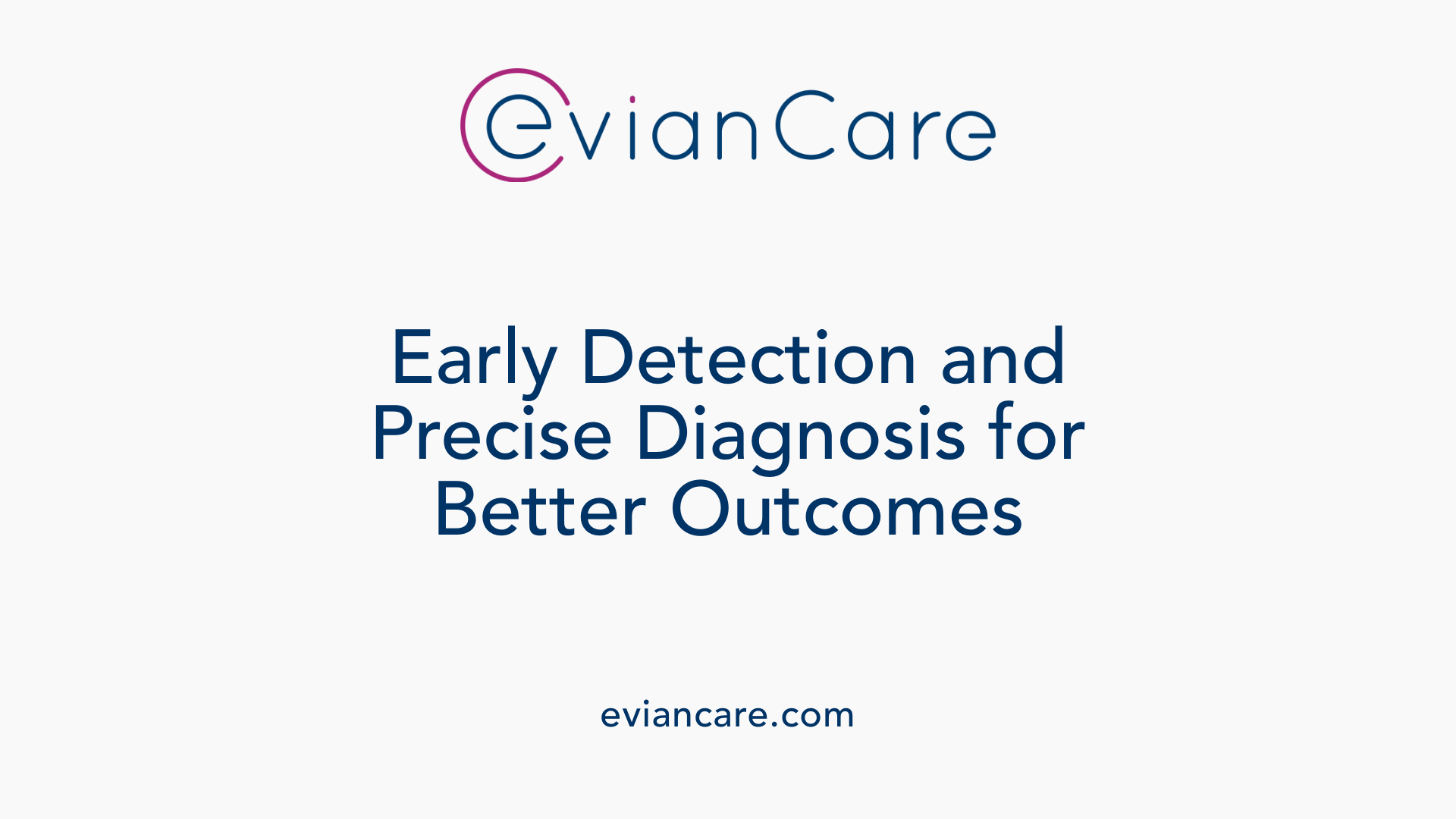
What symptoms and diagnosis procedures are involved in childhood anxiety?
Childhood anxiety manifests through various symptoms such as persistent and excessive worry, avoidance of feared situations, physical complaints like stomachaches or headaches, trouble sleeping, restlessness, irritability, and difficulty concentrating. Children may also exhibit emotional outbursts, clinginess, or social withdrawal, which can significantly affect their daily activities and developmental progress. Recognizing these signs early is crucial for effective intervention.
There are different types of anxiety disorders in children, including separation anxiety disorder, social anxiety disorder, specific phobias, generalized anxiety disorder, panic disorder, and obsessive-compulsive disorder (OCD). Each type has distinct features that help clinicians in diagnosing accurately.
The diagnosis process involves comprehensive assessment methods. Typically, clinicians conduct thorough interviews with the child and parents to gather detailed symptom descriptions and understand their impact. Standardized measures, behavioral avoidance tests, and symptom reports from teachers or caregivers supplement these interviews. The assessment usually spans over at least six months to observe symptom persistence and severity.
This detailed evaluation helps differentiate anxiety from normal developmental fears and other psychological conditions. Accurate diagnosis informs tailored treatment plans, which often include cognitive-behavioral therapy (CBT) to help children develop effective coping mechanisms. In some cases, medication such as selective serotonin reuptake inhibitors (SSRIs) or serotonin-norepinephrine reuptake inhibitors (SNRIs) may be prescribed to alleviate severe symptoms.
Early identification through comprehensive assessment can significantly improve long-term outcomes, allowing children to participate fully in daily activities and build resilience against future stressors.
| Aspect | Details | Additional Notes |
|---|---|---|
| Symptoms | Excessive worry, avoidance, physical complaints, sleep problems, irritability | Symptoms vary by disorder type and age |
| Types | Separation anxiety, social anxiety, phobias, GAD, panic, OCD | Each has unique features |
| Assessment tools | Clinical interviews, behavioral tests, symptom questionnaires | Sources include parents, teachers, children |
| Diagnosis criteria | Symptoms lasting over six months, impairment in functioning | Based on DSM-5 standards |
| Importance | Early detection leads to better intervention outcomes | Prevents long-term impairment |
Search query
"Childhood anxiety symptoms and assessment methods"
Behavioral Therapy Techniques in Practice
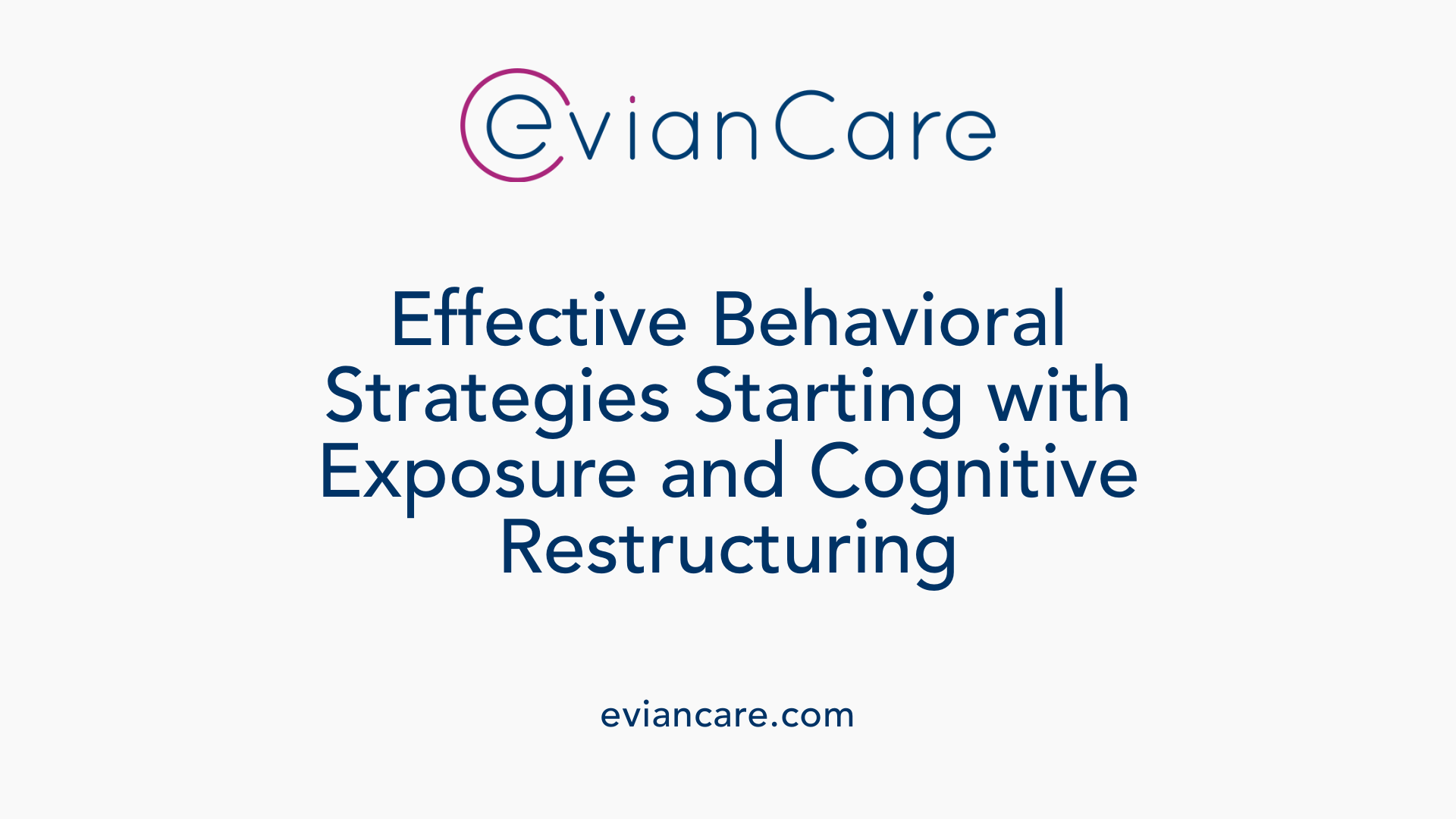 Cognitive-behavioral therapy (CBT) for childhood anxiety uses a variety of techniques to help children understand and manage their fears. One of the main strategies is exposure therapy, where children systematically and gradually confront anxiety-provoking situations or objects. This process often involves creating a fear hierarchy, starting with less threatening stimuli and progressing to more challenging ones, to help children build confidence and reduce avoidance.
Cognitive-behavioral therapy (CBT) for childhood anxiety uses a variety of techniques to help children understand and manage their fears. One of the main strategies is exposure therapy, where children systematically and gradually confront anxiety-provoking situations or objects. This process often involves creating a fear hierarchy, starting with less threatening stimuli and progressing to more challenging ones, to help children build confidence and reduce avoidance.
Another important component is cognitive restructuring. This technique involves teaching children to recognize and challenge unhelpful or irrational thoughts, such as catastrophizing or overgeneralizing. Activities like thought monitoring and guided discovery enable children to develop more realistic and balanced thinking.
Relaxation techniques are also incorporated, including deep breathing exercises, progressive muscle relaxation, and mindfulness practices. These methods help children calm their physiological responses to anxiety, making it easier to face fears.
Skills training complements these approaches by providing children with practical tools to cope with anxiety symptoms. This can include psychoeducational activities, behavioral rehearsals, and teaching problem-solving strategies.
Parental involvement and play-based activities further support treatment, making the process engaging and developmentally appropriate. Overall, these combined techniques aim to empower children with effective strategies to control their anxiety and improve their daily functioning.
The Role of Exposure in Anxiety Reduction

How does exposure therapy help children with anxiety?
Exposure therapy aids children in facing their fears step-by-step, which helps them build tolerance and reduce their anxiety responses. The process begins with creating a list of feared situations or stimuli and ranking them from least to most anxiety-provoking, forming what is called a hierarchy of fears.
Therapists then guide children through systematic exposures starting with the least distressing fears. These exposures are repeated enough times to promote habituation—the gradual decrease in physiological and emotional reactions to the feared stimuli. As children become more accustomed to their fears, their sense of threat diminishes, allowing them to approach situations they previously avoided.
Different methods of exposure can be used, including in-vivo (real-life) exposure, imaginal exposure, or virtual reality-based techniques. The goal is for children to disconfirm their catastrophic expectations—that feared outcomes are unlikely to happen—and learn that they can handle their fears.
Many children experience significant symptom improvement after completing exposure therapy, which is a core component of cognitive-behavioral therapy (CBT). This evidence-based approach effectively helps children regain confidence and participate in everyday activities they had been avoiding.
Parental and Family Involvement in Behavioral Therapy
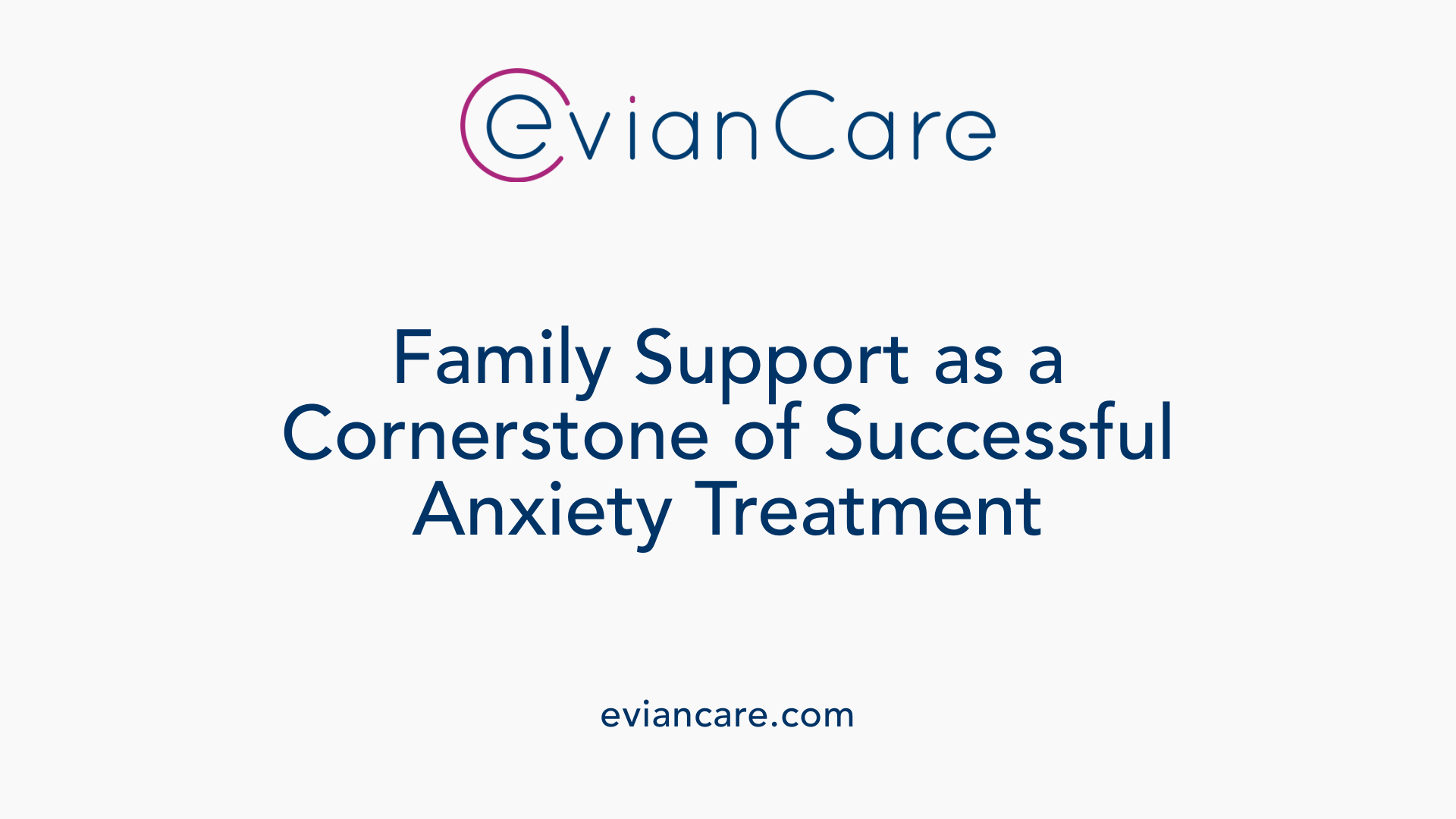 Supporting children with anxiety through behavioral therapy involves active participation and strategic responses from parents and caregivers. They can significantly influence the success of treatment by helping create a supportive environment at home. One effective way is to avoid reinforcing anxious behaviors, such as offering excessive reassurance or helping children avoid feared situations altogether. Instead, parents are encouraged to promote normalcy and allow children to face manageable challenges.
Supporting children with anxiety through behavioral therapy involves active participation and strategic responses from parents and caregivers. They can significantly influence the success of treatment by helping create a supportive environment at home. One effective way is to avoid reinforcing anxious behaviors, such as offering excessive reassurance or helping children avoid feared situations altogether. Instead, parents are encouraged to promote normalcy and allow children to face manageable challenges.
Programs like SPACE (Supportive Parenting for Anxious Childhood Emotions) are designed specifically to guide parents on how to respond to their child's anxiety. These programs teach caregivers to validate their child's feelings without encouraging avoidance and to foster independence gradually. By learning to respond differently to anxious cues, parents can reduce their child's reliance on reassurance and help them develop coping skills.
Family therapy can also offer substantial benefits by improving communication, setting consistent boundaries, and addressing family dynamics that may contribute to the child's anxiety. Engaging the entire family in therapy sessions creates a cohesive support system, which enhances the child's progress. It also helps reduce stress within the household and models healthy emotional regulation.
Research indicates that parental involvement, including psychoeducation and behavior management techniques, can be as impactful as individual therapy. When parents understand anxiety mechanisms and learn how to support their child's autonomy, the overall treatment outcomes improve.
In summary, consistent, informed, and empathetic parental participation is essential. It complements clinical interventions like CBT, encouraging children to apply learned skills in real-life settings and fostering resilience against anxiety.
For further understanding, searching for "Supporting children through parental involvement in therapy" can provide additional strategies to empower families and support children effectively in managing anxiety.
Additional Strategies and Supportive Interventions
What are effective, evidence-based behavioral strategies for managing childhood anxiety?
Managing childhood anxiety effectively involves a range of evidence-based behavioral strategies, with cognitive-behavioral therapy (CBT) standing out as the most supported approach. CBT employs techniques such as exposure therapy, cognitive restructuring, relaxation training, and mindfulness practices.
Exposure therapy is a cornerstone of CBT, where children gradually confront fear-inducing situations or objects in a systematic way. This often involves creating a hierarchy of fears, starting with less threatening scenarios and progressing to more challenging ones. Through repeated exposure, children learn that feared outcomes are unlikely, reducing their anxiety responses.
Cognitive restructuring helps children recognize and challenge maladaptive thoughts, replacing them with more balanced and realistic beliefs. Paired with relaxation techniques like deep breathing or progressive muscle relaxation, these strategies help manage physiological symptoms of anxiety.
Parental involvement enhances treatment effectiveness. Family-based interventions, including parent training and family-focused CBT, teach caregivers how to support their children without reinforcing avoidance behaviors or excessive reassurance.
Research shows that most children experience significant improvement within 10 to 16 therapy sessions. These interventions can be delivered in various settings, such as schools, clinics, or via telehealth programs.
In severe cases, combining CBT with medication—particularly selective serotonin reuptake inhibitors (SSRIs)—may be necessary to achieve optimal results. Furthermore, attachment-based family therapies can provide additional emotional support, especially for adolescents.
Overall, these behavioral strategies aim to help children confront fears, develop coping skills, and build resilience, leading to a marked reduction in anxiety symptoms and improved daily functioning.
| Strategy | Description | Typical Use Case |
|---|---|---|
| Exposure therapy | Gradual confrontation of feared stimuli | Anxiety hierarchy development |
| Cognitive restructuring | Challenging and replacing negative thoughts | Changing maladaptive beliefs |
| Relaxation techniques | Managing physiological arousal with deep breathing or muscle relaxation | Calming physiological response |
| Parental involvement | Engaging families to support and reinforce strategies | Enhancing treatment outcomes |
| Mindfulness and meditation | Focusing attention and reducing stress | Long-term resilience building |
Access to personalized behavioral interventions continues to improve, with options like app-based programs expanding reach. Overall, combining these methods provides the best chance for children to overcome anxiety and develop lifelong coping skills.
Long-Term Outcomes and Relapse Prevention
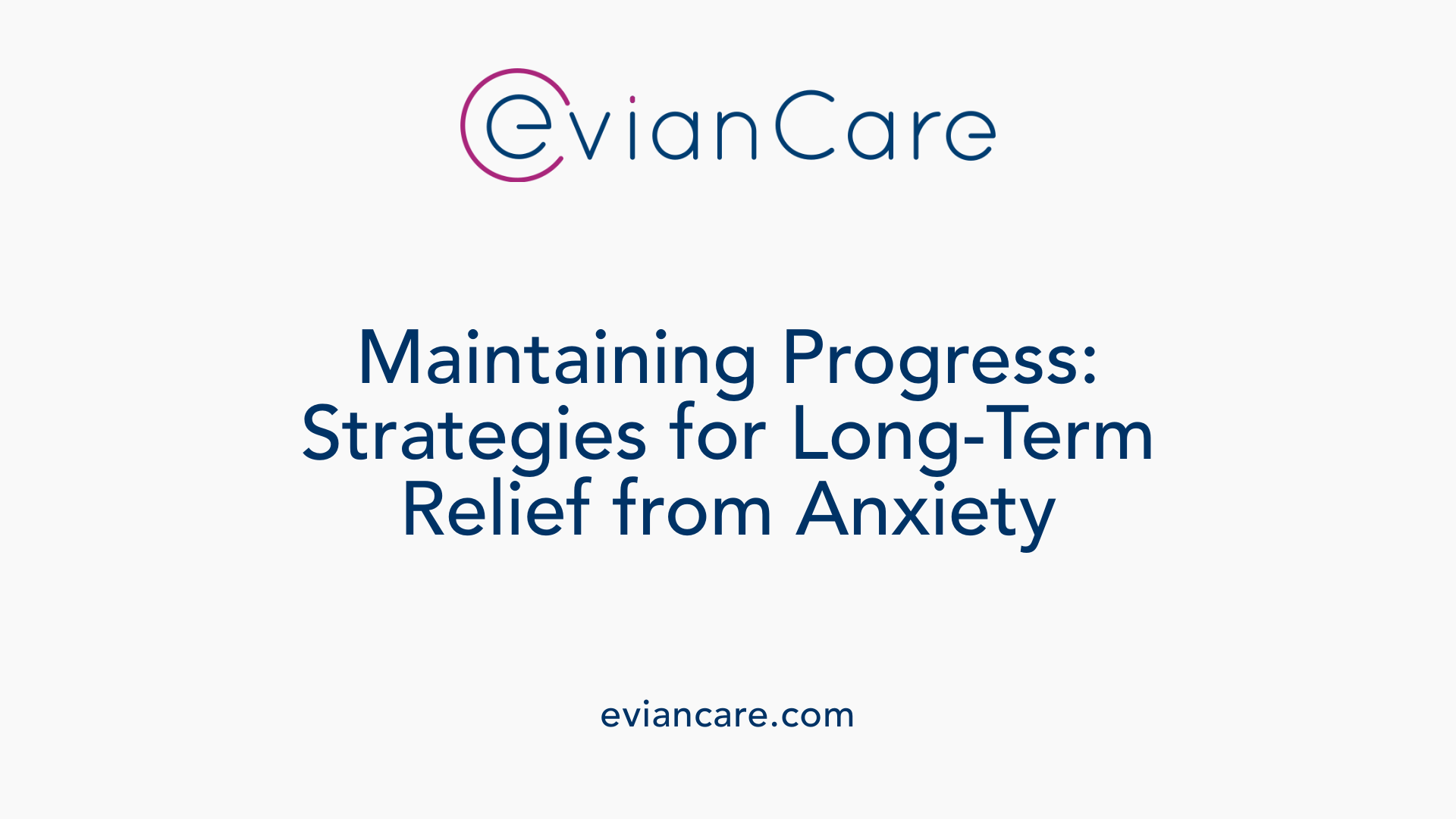
Why is relapse prevention important in childhood anxiety treatment?
Relapse prevention plays a crucial role in maintaining the improvements gained through therapy. Since anxiety symptoms can resurface, especially during stressful life events or developmental changes, preparing children and their families to manage setbacks is essential.
Effective relapse prevention involves reinforcing the coping strategies children have learned, such as cognitive restructuring and exposure techniques. Developing a personalized relapse plan helps children recognize early signs of anxiety resurgence and utilize skills learned in therapy to manage them.
Clinicians often recommend booster sessions that revisit treatment strategies, update hierarchies, and address new challenges. Ongoing psychoeducation about anxiety and its management empowers children and families to remain proactive.
Creating a supportive environment at home, school, and within peer groups facilitates resilience. Parents, teachers, and caregivers are encouraged to practice relaxation exercises, promote independence, and avoid reinforcing avoidance behaviors.
By fostering these habits, children develop long-term self-efficacy, which reduces the likelihood of symptoms returning. This ongoing support and skill reinforcement help children maintain their progress and navigate future stressors confidently.
Innovative and Future Directions in Childhood Anxiety Treatment
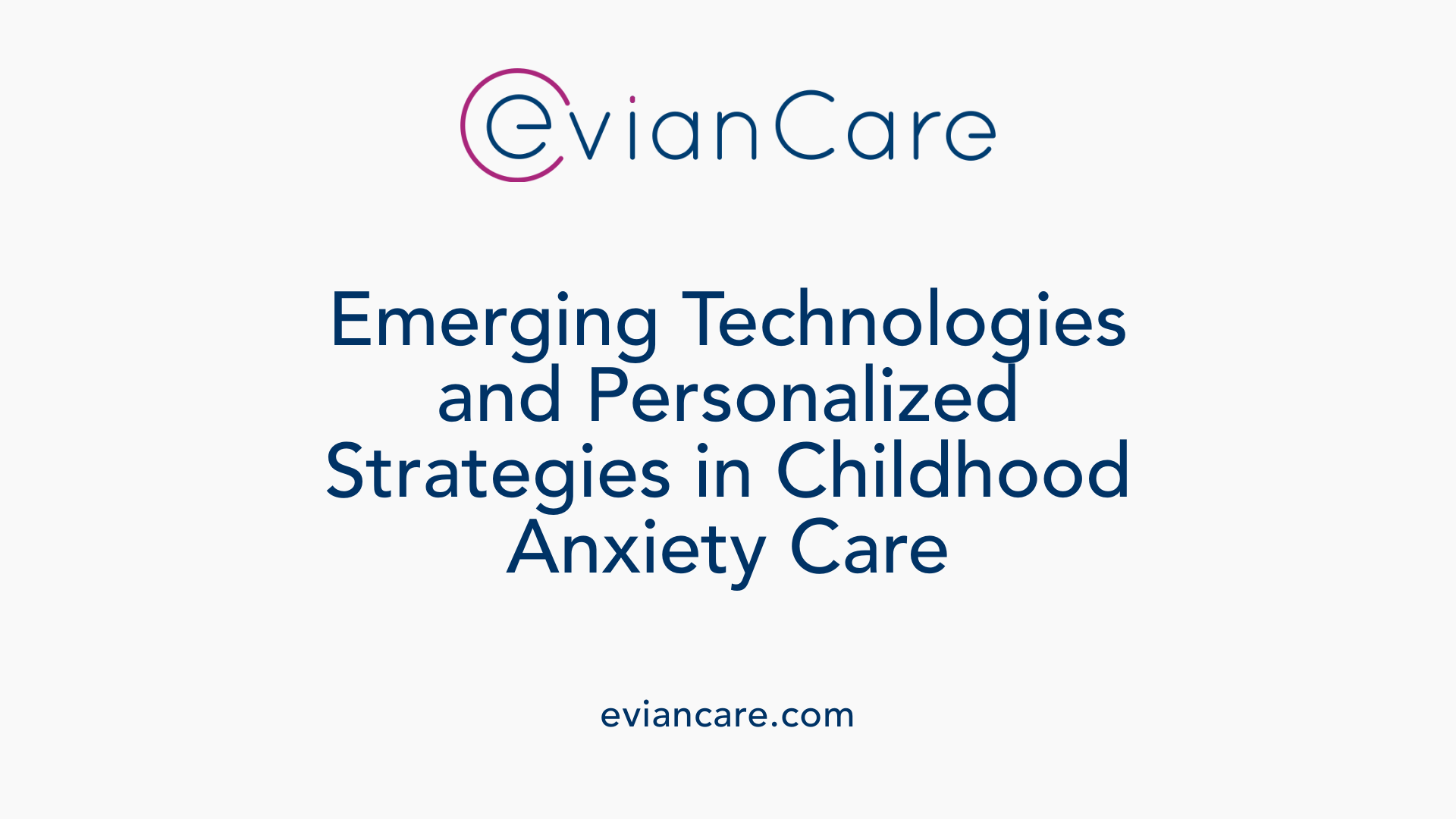
How is research advancing personalized behavioral interventions for childhood anxiety?
Recent research is making significant strides in tailoring treatments for children with anxiety. By leveraging predictive analytics and machine learning, scientists aim to identify which children are most likely to benefit from specific therapy components. This move toward personalization helps optimize outcomes and can make treatments more efficient.
One promising approach involves modular therapy, where different treatment modules target various symptoms or co-occurring conditions. Therapists can adapt the focus, intensity, and mode of delivery—such as app-based or telehealth formats—to suit individual needs.
Studies are also exploring deepening understanding of what influences treatment success, known as mediators and moderators. This insight helps customize therapy strategies further, ensuring children receive the most effective intervention for their specific profile.
Future developments may include integrating neurobiological data—like brain imaging results—with digital tools and family-centered models. These personalized approaches could involve apps, online programs, or virtual reality to deliver exposure and cognitive strategies in engaging ways.
As science advances, the goal is to make behavioral therapy not only more effective but also more accessible. Customizing treatments based on genetic, biological, and environmental factors holds promise for improving mental health outcomes for children suffering from anxiety.
| Approach | Focus | Mode of Delivery | Potential Benefit |
|---|---|---|---|
| Predictive analytics and ML | Tailoring interventions | Digital, in-person, telehealth | Increased efficacy and shorter treatment time |
| Modular therapy | Specific symptoms or comorbidities | Various formats | Flexibility and targeting |
| Neurobiological integration | Brain-based markers | Tech-assisted assessment | Enhanced precision in treatment |
| Family-centered models | Family dynamics | Family therapy, app-support | Better real-world generalization |
As research progresses, these innovations are set to revolutionize how childhood anxiety is understood and treated, offering hope for more children to achieve lasting improvements.
Empowering Children and Families Through Behavioral Strategies
Behavioral therapy strategies, particularly cognitive-behavioral therapy and exposure techniques, form the backbone of effective childhood anxiety management. Combining these evidence-based methods with comprehensive assessment, parental involvement, and ongoing relapse prevention, clinicians can significantly diminish anxiety symptoms, restore daily functioning, and improve quality of life. Advancements in personalized approaches and technology promise to further enhance outcomes, making anxiety treatment more accessible and tailored to individual needs. Early recognition, timely intervention, and collaborative effort among children, families, and professionals remain essential to fostering resilience and emotional well-being in young children affected by anxiety.
References
- Behavioral Treatment for Kids With Anxiety | Child Mind Institute
- Cognitive Behavioral Therapy for Anxiety Disorders in Youth - PMC
- CBT for Childhood Anxiety | Empower Your Child
- Cognitive Behavioral Therapy for Anxiety Disorders in Children
- Anxiety and Depression in Children | Children's Mental Health - CDC
- Addressing Childhood Anxiety: Tools And Techniques For Therapists
- Anxiety in children and youth: Part 2 - Canadian Paediatric Society








